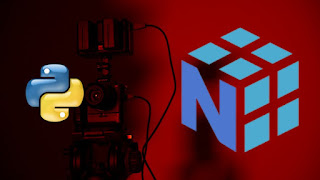[100% OFF] Numpy For Data Science – Real Time Exercises
Welcome to the comprehensive Python programming course that will not only teach you Python but also provide real-time coding exercises using Jupyter Notebook. This course is designed to make learning Python easy and accessible, even if you're a beginner. Let's start by taking a closer look at Python and how it works.
What is Python?
Python is a high-level programming language that uses instructions to teach computers how to perform tasks. It is known for its simplicity and readability, making it an excellent choice for beginners. Python's syntax is designed to be similar to human language, making it easier to understand and write code.
Key Features of Python:
Object-Oriented Programming: Python supports an object-oriented programming approach, which is a popular and effective way to write programs.
Open Source: Python is free and open-source, meaning you can read, modify, and distribute its source code. This encourages a thriving community of developers.
Versatile: Python is versatile and finds applications in various domains, including web development, game development, desktop applications, machine learning, and data science.
How Python Works
Python is an interpreted language, which means you don't need to compile it before running your code. Here's how Python works:
Writing Code: You write Python instructions in a text editor.
Interpretation: Python programs are executed directly from the source code. The source code is converted into Intermediate Bytecode.
Compilation: Python's interpreter converts the Intermediate Bytecode into the native machine language of the computer.
Execution: The code is executed, and the output is presented.
So, Python Source Code ➡️ Intermediate Bytecode ➡️ Machine Language ➡️ Code Execution.
What is a Program?
A program is a set of instructions that tells a computer how to perform a specific task. It's written in a programming language, such as Python. For example, when you click the "Play" button on a media player, there's a program running in the background that instructs the computer to play music.
Built-in Functions and Comments
In Python, you have access to built-in functions, which are predefined and can be used directly. For example, the print() function is a built-in function used to display output.
Comments are lines of code that are ignored by the Python interpreter. They are used to make the source code more understandable to other people. Python supports single-line comments, which begin with a "#" symbol.
Course Topics Overview
Now, let's take a quick overview of the topics covered in this course:
Variables: Learn how to declare and use variables to store data.
Data Types in Python: Explore data types like integers, floats, strings, lists, tuples, sets, and dictionaries.
String Manipulation: Understand string operations, including concatenation and newline characters.
Lists: Dive into lists, a versatile data structure for storing collections of items.
Tuples: Explore tuples, similar to lists but with immutability.
Sets: Learn about sets, unordered collections of unique elements.
Dictionaries: Discover dictionaries, key-value pairs that provide efficient data storage.
Concatenation: Combine strings using concatenation.
Control Structures: Understand control structures like loops and conditionals.
Functions: Define and use functions to organize and reuse code.
Lambda Functions: Create concise single-line functions with lambda expressions.
Input Function: Take user input and store it in variables.
Indexing: Access elements in lists, strings, and nested data structures.
For Loops: Iterate through sequences using for loops.
While Loops: Create loops that execute as long as a condition is met.
Split Function: Split strings into lists using a separator.
Map Function: Apply a function to all items in an iterable.
Filter Function: Filter items in an iterable based on a condition.
Enumerate Function: Get index-value pairs while iterating.
Zip Function: Combine multiple iterables into one.
Unzip Function: Split a zipped iterable into its components.
Conclusion
This Python course will equip you with the knowledge and skills to become proficient in Python programming. You'll not only learn the theory but also practice with real-time coding exercises in Jupyter Notebook. By the end of this course, you'll be well-prepared to use Python in various applications, from web development to data science.




Comments
Post a Comment
If you have any doubt, Please comment below!